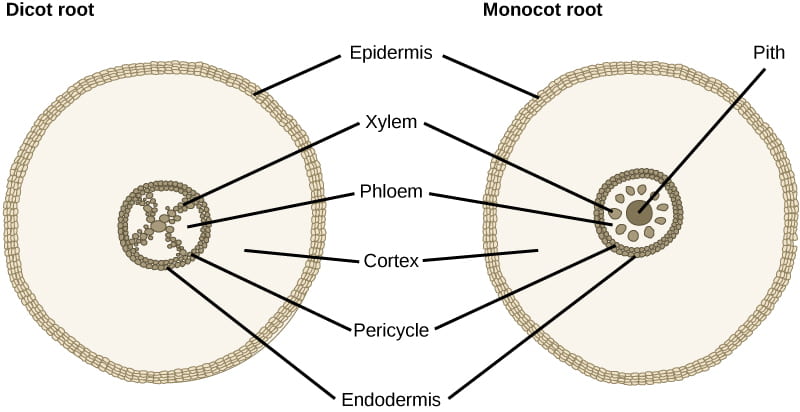In (left) typical dicots, the vascular tissue forms an X shape in the center of the root. In (right) typical monocots, the phloem cells and the larger xylem cells form a characteristic ring around the central pith. The cross section of a dicot root has an X-shaped structure at its center. The X is made up of many xylem cells. Phloem cells fill the space between the X. A ring of cells called the pericycle surrounds the xylem and phloem. The outer edge of the pericycle is called the endodermis. A thick layer of cortex tissue surrounds the pericycle. The cortex is enclosed in a layer of cells called the epidermis. The monocot root is similar to a dicot root, but the center of the root is filled with pith. The phloem cells form a ring around the pith. Round clusters of xylem cells are embedded in the phloem, symmetrically arranged around the central pith. The outer pericycle, endodermis, cortex and epidermis are the same in the dicot root.
Plant Development I: Tissue differentiation and function


